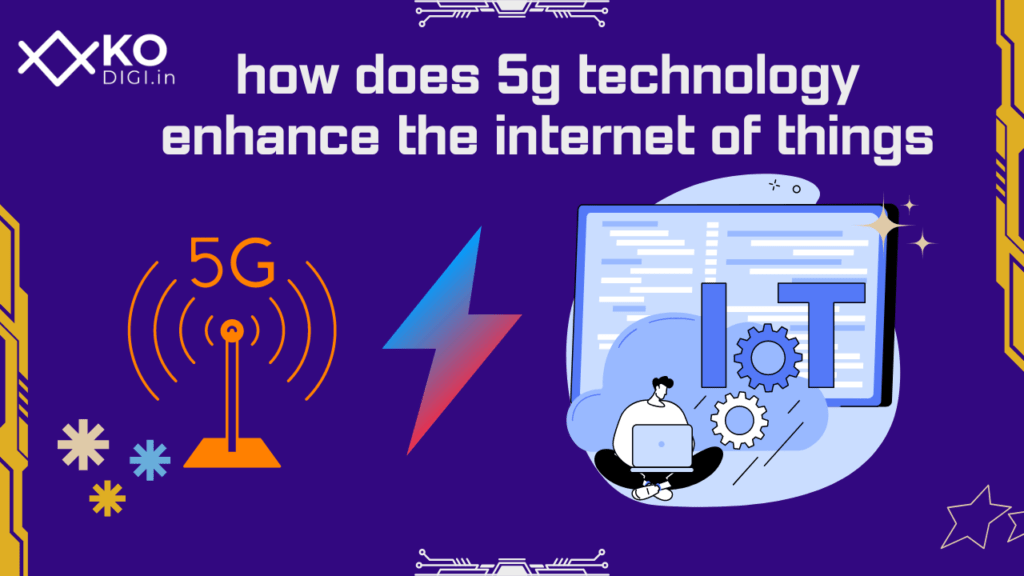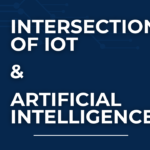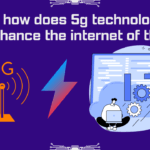This question of how 5g technology going to improve the internet of things is a million-dollar question as 5g gives very fast internet. Nowadays even in our houses, we use high-speed internet connections for our home gadgets. First, we will see what’s the 5g technology.
What is 5g technology?
The fifth iteration of mobile networks, or 5G technology, provides faster data transfer speeds. It also reduces latency and greater network capacity than its forerunners. For a large variety of applications and devices, including smartphones, IoT devices, autonomous vehicles, and virtual and augmented reality systems. We intend to deliver faster internet connectivity, improve efficiency, and enhance user experience. In today’s world, the most popular Indian network brands like Airtel & Jio introduce 5g to the market.
It uses the most advanced cutting-edge technologies such as millimeter-wave frequencies, and massive MIMO antennas. And beamforming strategies to send data at rates of up to 20 Gbps. These technologies make 5G much faster than 4G. 5G technology’s reduced latency enables real-time communication and low-latency applications, such as remote surgery, smart cities, and industrial automation.
What is the Internet of Things (IoT)?
The term “Internet of Things” (IoT) describes a network of physical objects such as cars, appliances, and other household items. We can connect it to the network and equip it with sensors, software, and connectivity. This allows them to gather and share data without the need for human involvement. IoT, or the Internet of Things, is the idea of connecting common objects to the internet. They can communicate with each other, transmit and receive data, and be controlled remotely.
Four major components make the IoT ecosystem work. They are
- The sensors or the physical devices,
- The network infrastructure that connects them,
- The software platforms handle the data.
- The applications that make use of the data.
Applications of IoT
The applications of IoT are vast. Various industries, such as manufacturing, healthcare, agriculture, and household automation, can incorporate them. The healthcare sector can utilize IoT devices to remotely monitor patients. Provide doctors with real-time health data, and schedule medication delivery. In agriculture, IoT sensors can track crop development, weather conditions, soil moisture levels, and autonomous vehicles. That allows producers to optimize food yields and minimize waste.
Now, let’s return to our main question of how 5g enhances the Internet of things,
Many factors enhance the Internet of things, lets us see them one by one in detail
Faster Data Transfer Speeds:
Comparatively speaking, 5G networks offer data transfer rates that are noticeably faster than those of earlier mobile network generations. While 5G networks can deliver speeds of up to 20 Gbps. That is 200 times faster than 4G, 4G networks usually provide speeds of around 100 Mbps. This indicates that there is no discernible lag between the sending and receiving of data by IoT devices.
This is crucial for high-speed data transfer-dependent apps like augmented reality, remote surgery, and autonomous vehicles. For instance, autonomous vehicles must process huge amounts of data in real-time. As they depend on a wide range of sensors and cameras to help them navigate their surroundings. 5G technology enables the swift and reliable sending of this data. As it allows the vehicle to make decisions and perform actions in real-time.
Similarly, during remote surgery, medical professionals can use robotic tools to operate on patients. For patients who are in another city or even another nation. Any lag in the data transfer, however, could have negative effects. The physician can operate the robotic device as if they were in the same room. As the patient thanks to 5G technology which enables real-time data transmission for the number of connected devices.
Lower Latency:
The term latency refers to the time that data takes to travel from one point to the other point. Gaming, virtual reality, and remote control of robots or drones are examples of applications that require real-time communication or interaction. It is perfect for Internet of Things (IoT) applications that require real-time responsiveness. Because 5G’s latency can be as low as 1 millisecond, which is 10 times faster than 4G.
The fact that 5G technology uses cutting-edge radio technologies like massive MIMO (Multiple-Input Multiple-Output) and beamforming. As they are one of the primary factors contributing to its reduced latency. Massive MIMO transmits and receives data using a large number of antennas. That allows the network to support more users and devices at once while also lowering congestion and boosting signal strength. On the other hand, beamforming enables the network to focus the signal on particular devices or regions. That reduces the distance that the data needs to traverse and, consequently, the latency.
For Internet of Things (IoT) applications that demand real-time control or monitoring, lower latency is especially crucial. For instance, real-time control of robots is necessary for industrial automation. To perform complicated tasks and prevent collisions with other robots or people. 5G technology allows for the real-time sending and receiving of control signals. Which enables the robots to respond rapidly to changes in their surroundings.
5G technology’s reduced latency enhances the Internet of Things overall. Because it is more responsive, effective, and able to handle real-time applications. It makes possible brand-new use cases and business models that were not feasible with earlier generations of mobile networks. And it creates chances for invention and industry expansion.
Higher Network Capacity:
The Internet of Things (IoT) has brought about a proliferation of connected devices, resulting in an enormous amount of data that requires transmission and processing. Mobile networks must be able to manage the increasing amount of data generated by IoT devices, which presents a challenge. By providing a larger network capacity and allowing more devices to link to the network at once, 5G technology solves this problem.
Key Components of 5G Technology for Higher Network Capacity
The use of higher frequency bands, like millimeter waves (mmWave), which can handle wider bandwidths and higher data rates, is one of the key components of 5G technology. As a result, more devices can join the network without affecting the pace or functionality of other devices using the same network.
Smart Cities: Real-Time Monitoring and Better Decision-Making
For applications that require a large number of devices to be linked to the network at once, such as smart cities, where thousands of sensors and cameras are installed to monitor traffic, air quality, and other environmental factors, a higher network capacity is especially crucial. These devices can all be concurrently linked to the network thanks to 5G technology, allowing data to be gathered and processed in real-time, facilitating better decision-making, and raising the standard of living in the city as a whole.
Industrial IoT: Real-Time Monitoring and Boosted Productivity
In the industrial Internet of Things (IIoT), where machines and equipment are connected to the network to allow real-time monitoring and control, greater network capacity is crucial. With the help of 5G technology, these devices and machinery can be connected to the network without any hiccups or delays, allowing real-time monitoring and control while boosting productivity.
Enabling New Use Cases and Business Models with Higher Network Capacity
Higher network bandwidth also makes new use cases and business models possible, like virtual and augmented reality, which need to send and process large amounts of data in real time. These apps can now be supported by 5G technology without any lag or delays, opening the door to immersive experiences that were previously impractical.
Improved Energy Efficiency:
Smart household appliances, industrial machines, and sensors are just a few of the connected gadgets that have proliferated thanks to the Internet of Things (IoT). The energy consumption of these devices, which can have an increased cost and negative environmental effects, is one of the IoT’s challenges. This issue is resolved by 5G technology, which offers greater energy efficiency and allows IoT devices to run for extended periods on a single battery charge.
Utilizing cutting-edge power management strategies like network slicing and dynamic resource allocation is one of the main reasons 5G technology has better energy efficiency. By dividing the network into several virtual networks, each with its own set of resources and traits, network slicing enables devices to use only the resources they require, saving energy. On the other hand, dynamic resource allocation enables devices to only request and receive the resources they require at any given moment, allowing for the energy-efficient use of network resources.
The use of low-power wide-area (LPWA) networks, such as Narrowband IoT (NB-IoT) and Long Range (LoRa), which are created especially for IoT applications, is another aspect of 5G technology’s higher energy efficiency. These networks use low-bandwidth, low-power transmissions that enable devices to run for extended periods—sometimes up to 10 years—on a single battery charge.
A higher energy economy is crucial for IoT applications that call for devices to run in remote or challenging environments where changing or recharging batteries can be challenging or expensive. For instance, IoT sensors can be used in the farm sector to track soil moisture, temperature, and other environmental variables, allowing for more effective resource use and increased crop yields. These sensors no longer require frequent battery replacements or recharging thanks to 5G technology, which allows them to function for extended periods on a single charge.
Conclusion
In conclusion, 5G technology enables new use cases and business models. That was not feasible with earlier generations of mobile networks by offering the infrastructure and capabilities. Which is needed to support the rapid development of IoT devices and applications.




